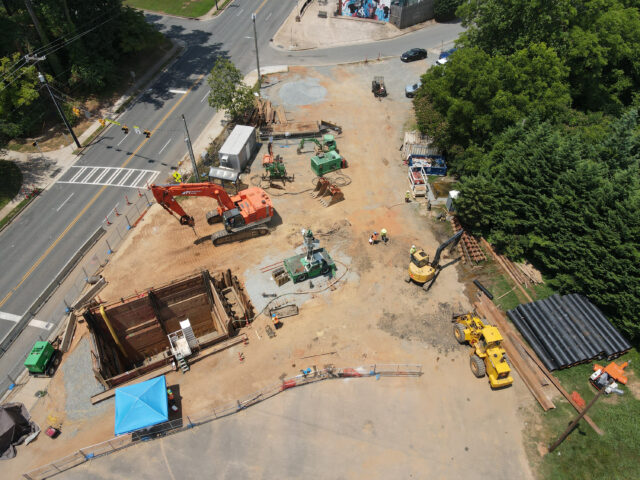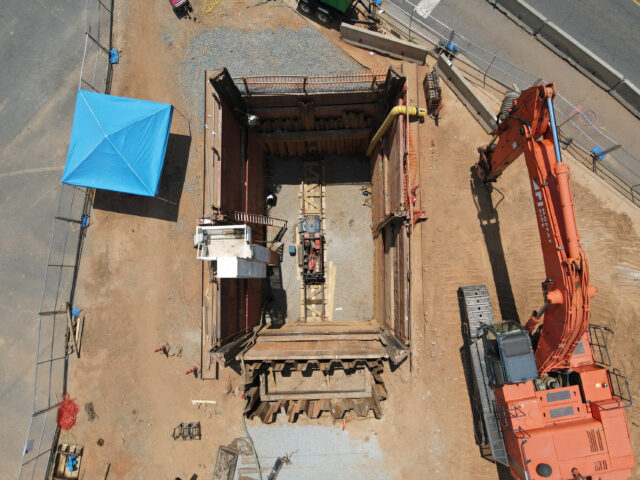All of us have felt the frustration of construction impacts on our commute home at one time or another. With many cities experiencing unprecedented growth, and therefore increased traffic volumes, road closures caused by replacing storm drainage infrastructure can cause commuting headaches!
Luckily, some construction methods are more commuter friendly than others. If minimizing road closures is a priority for your project, you might want to consider a jack and tunnel approach instead of the more traditional/common jack and bore method.
The jack and bore method (a method of trenchless installation for circular pipes and casings) is what comes first to many people’s minds when thinking about stormwater infrastructure installation. While efficient, it causes surface disruption if you are replacing a culvert under a major thoroughfare. This could lead to road closures in busy intersections, which may not be an option due to commuter volume.
The jack and tunnel method is also a trenchless method to install a box culvert. While this approach is rare, growing municipalities that need an efficient way to install a box culvert with minimal disruption to traffic flow could benefit from considering it.
The technical process is as follows:
- The reinforced concrete box culvert must be designed to withstand the forces from a hydraulic jacking system in addition to ultimate service loads.
- A launching pit is constructed similar to a traditional bore pit with the exception of the thrust restraint for the hydraulic jacking process, which may be more substantial depending on the size of the culvert.
- A tunnel shield is fabricated from steel plates that are attached to the leading edge of the culvert. The culvert itself provides the work area for the tunnel crew to excavate and transport soil material from the tunnel face.
- Bentonite slurry is injected through grout ports in the box culvert to do two things: fill any voids around the culvert created by overcut or soil sloughing; and lubricate the culvert to help avoid it “seizing up” during the jacking process.
- Once the culvert is in its final position, grout is injected to fully displace the bentonite slurry and eliminate any voids around the culvert.
Although the installation of a box culvert by jack and tunnel is more expensive than a traditional open cut method, it can be extremely beneficial for replacing aging infrastructure while also minimizing commuter disruption.
We have successfully used the jack and tunnel method to install box culverts under railroads and major thoroughfares in many growing communities and would welcome the opportunity to help assess which approach may be better for you.



